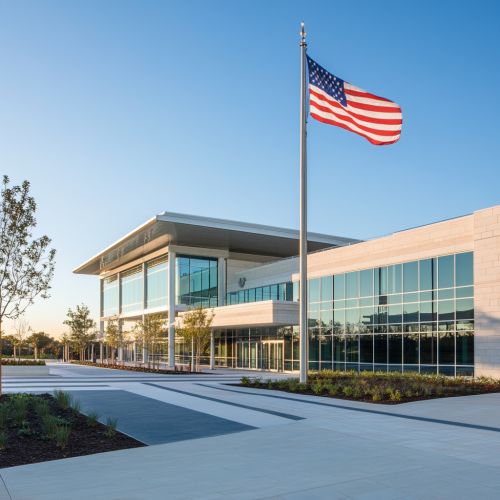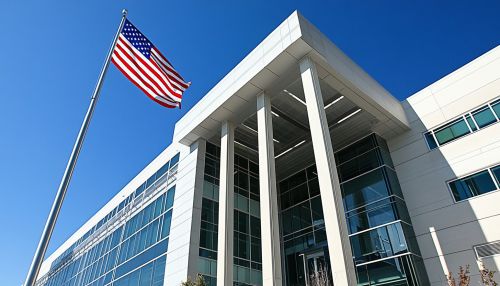United States Citizenship and Immigration Services
Overview
The United States Citizenship and Immigration Services (USCIS) is a federal agency under the United States Department of Homeland Security (DHS). It is responsible for overseeing lawful immigration to the United States. USCIS administers the nation's immigration system, ensuring the integrity of the process while facilitating legal immigration. The agency's primary functions include processing immigrant visa petitions, naturalization applications, asylum and refugee applications, and managing other immigration-related services.


Historical Background
USCIS was established as part of the Homeland Security Act of 2002, which restructured the immigration system following the September 11, 2001, terrorist attacks. Prior to its creation, immigration services were managed by the Immigration and Naturalization Service (INS), an agency within the Department of Justice. The restructuring aimed to enhance national security and improve the efficiency of immigration processes by dividing the enforcement and service functions of the INS into separate entities. USCIS took over the service functions, while the enforcement responsibilities were assigned to U.S. Immigration and Customs Enforcement (ICE) and U.S. Customs and Border Protection (CBP).
Organizational Structure
USCIS is led by a Director, who is appointed by the President and confirmed by the Senate. The agency is headquartered in Washington, D.C., and operates through a network of regional, district, and field offices across the United States and abroad. USCIS is organized into several directorates and divisions, each responsible for specific functions:
- **Service Center Operations**: Manages the processing of applications and petitions that do not require face-to-face interviews.
- **Field Operations**: Oversees the field offices that conduct interviews and provide direct services to applicants.
- **Refugee, Asylum, and International Operations**: Handles refugee and asylum applications and manages international offices.
- **Fraud Detection and National Security**: Focuses on identifying and preventing immigration fraud and threats to national security.
Core Functions
Processing Applications and Petitions
USCIS is tasked with processing a wide range of immigration applications and petitions. These include:
- **Immigrant Visa Petitions**: Applications for family-sponsored and employment-based immigrant visas.
- **Naturalization Applications**: Processes applications for U.S. citizenship, including conducting interviews and administering the Oath of Allegiance.
- **Asylum and Refugee Applications**: Evaluates claims for asylum and refugee status, providing protection to individuals fleeing persecution.
- **Non-Immigrant Visa Petitions**: Manages applications for temporary visas, such as student and work visas.
Citizenship and Naturalization
One of the primary responsibilities of USCIS is to administer the naturalization process, which allows eligible immigrants to become U.S. citizens. This involves evaluating applications, conducting interviews, and administering the citizenship test. USCIS also organizes naturalization ceremonies, where new citizens take the Oath of Allegiance.
Asylum and Refugee Processing
USCIS plays a crucial role in providing protection to individuals who have fled persecution in their home countries. The agency processes asylum applications for those already in the United States and refugee applications for individuals outside the country. This involves conducting interviews and background checks to determine eligibility for protection under U.S. law.
Fraud Detection and National Security
To maintain the integrity of the immigration system, USCIS has a dedicated Fraud Detection and National Security Directorate. This division works to identify and prevent immigration fraud, conduct background checks, and ensure that applicants do not pose a threat to national security. The directorate collaborates with other federal agencies, such as ICE and the FBI, to share information and resources.
Challenges and Reforms
USCIS faces several challenges in fulfilling its mission, including managing a high volume of applications, ensuring timely processing, and adapting to changing immigration policies. The agency has implemented various reforms to address these challenges, such as modernizing its information technology systems, streamlining processes, and enhancing customer service.
Technological Advancements
To improve efficiency and reduce processing times, USCIS has invested in technological advancements, such as the Electronic Immigration System (ELIS). This system allows applicants to submit and track their applications online, reducing paperwork and speeding up the processing time. USCIS continues to explore new technologies to further enhance its operations.
Policy Changes
USCIS must adapt to evolving immigration policies and legislative changes. This requires the agency to update its procedures and guidelines regularly. For example, changes in asylum policies or adjustments to visa quotas can significantly impact USCIS operations. The agency works closely with Congress and the DHS to implement policy changes effectively.
Public Engagement and Outreach
USCIS engages with the public through various outreach programs and initiatives. These efforts aim to educate immigrants about their rights and responsibilities, provide information on the immigration process, and gather feedback to improve services. USCIS conducts community outreach events, offers informational resources on its website, and collaborates with community organizations to reach diverse populations.
Conclusion
The United States Citizenship and Immigration Services plays a vital role in managing the nation's immigration system. By processing applications, ensuring security, and facilitating legal immigration, USCIS contributes to the country's social and economic fabric. Despite facing challenges, the agency continues to evolve and adapt to meet the needs of immigrants and the nation.
